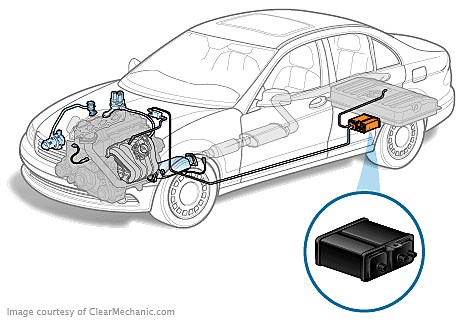The EVAP (Evaporative Emission Control) system in your car prevents fuel vapors from escaping into the atmosphere. A key component of this system is the EVAP canister, which stores these vapors until they can be burned by the engine. If your EVAP canister is faulty, you might be wondering about the replacement cost. This article breaks down the factors affecting the cost, common symptoms of a bad canister, and tips for extending its lifespan.
Factors Affecting EVAP Canister Replacement Cost
Several factors influence the overall cost of replacing an EVAP canister:
Labor Costs
The biggest variable is labor. Depending on your location and the mechanic you choose (dealership vs. independent shop), labor rates can fluctuate significantly. Expect labor to account for a substantial portion of the total cost, often ranging from 1 to 3 hours of work.
Part Costs
The price of the EVAP canister itself depends on your car’s make and model. Some canisters are more complex and expensive to manufacture than others. Aftermarket parts are typically cheaper than original equipment manufacturer (OEM) parts, but quality can vary.
Vehicle Accessibility
The location of the EVAP canister in your vehicle also plays a role in labor costs. If it’s easily accessible, replacement will be quicker and cheaper. However, if it’s buried deep within the engine compartment, accessing and replacing it will take more time and effort, driving up labor costs.
Estimating the Total Cost
While precise costs vary, you can generally expect to pay between $200 and $600 for parts and labor to replace an EVAP canister. In some cases, especially for luxury or high-performance vehicles, the cost could exceed this range. It’s always best to get a quote from a trusted mechanic for your specific vehicle.
Symptoms of a Bad EVAP Canister
A failing EVAP canister often manifests in several noticeable ways:
- Check Engine Light: One of the most common indicators is an illuminated check engine light. A diagnostic scan can confirm if the issue is related to the EVAP system.
- Strong Fuel Smell: A persistent fuel odor around your vehicle, even when not refueling, suggests a potential EVAP canister problem.
- Decreased Fuel Efficiency: A noticeable drop in your car’s gas mileage could point to a faulty EVAP system, including a bad canister.
- Engine Performance Issues: Problems like rough idling, misfires, or hesitation can also be caused by a failing EVAP canister.
- Difficulty Starting: In some cases, a bad EVAP canister can make it difficult to start your car.
Extending the Life of Your EVAP Canister
While EVAP canisters are designed to last a long time, you can take steps to prolong their lifespan:
- Adhere to Maintenance Schedules: Follow your manufacturer’s recommended maintenance schedule, which may include inspections of the EVAP system.
- Avoid Extreme Conditions: Excessive heat or harsh driving conditions can contribute to premature wear and tear on the EVAP system components.
- Prompt Repairs: Address any EVAP system issues as soon as they arise to prevent further damage and potentially more costly repairs down the line.
Conclusion
Replacing a faulty EVAP canister is a necessary expense to maintain your vehicle’s emissions control system and overall performance. Understanding the factors influencing the cost and recognizing the symptoms of a bad canister can help you budget for this repair and address it promptly. Regular maintenance and careful driving habits can help extend the life of your EVAP canister and minimize the need for premature replacement.

